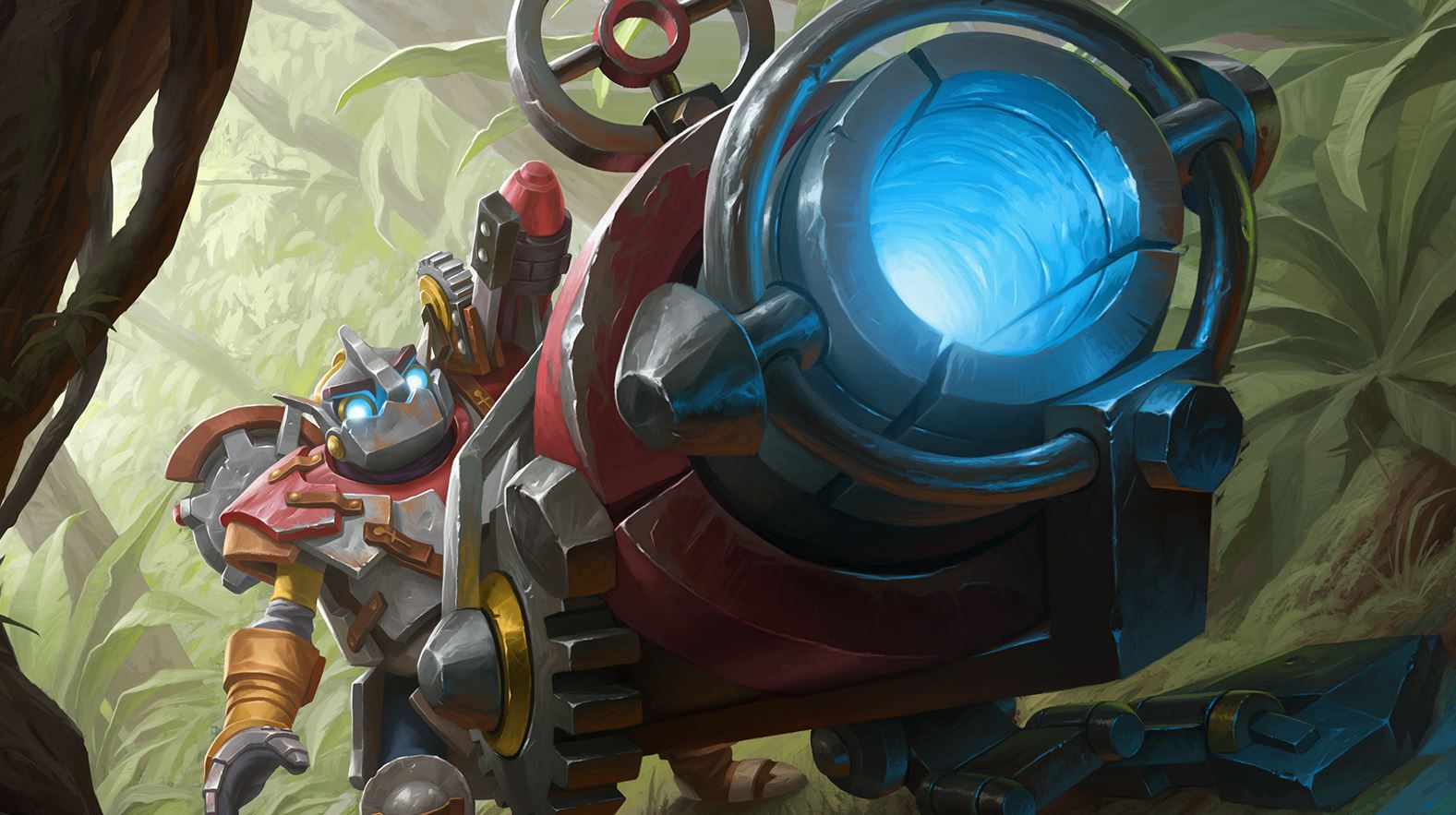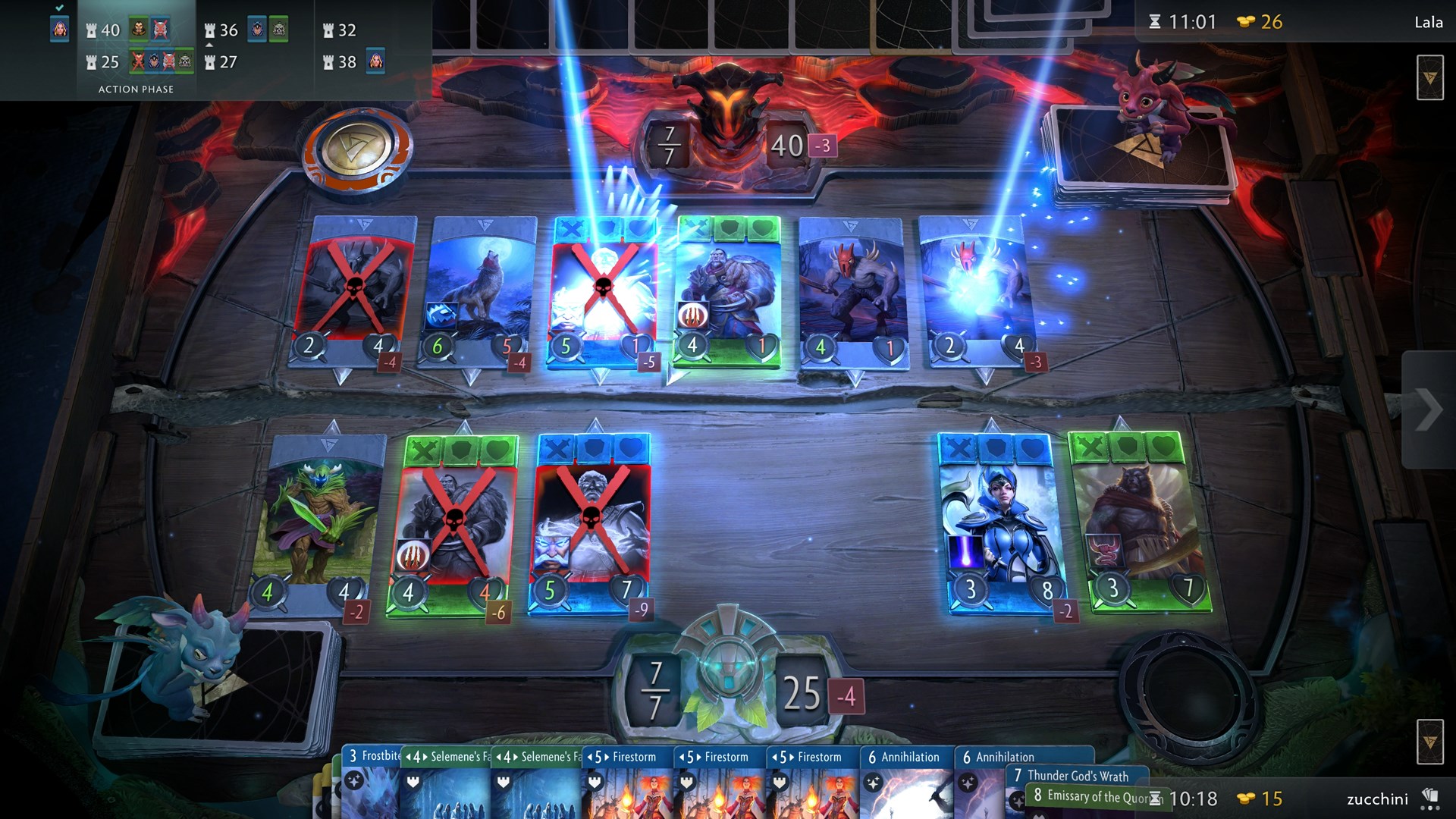Artifact is not nearly as hard to play as it looks
It’s just Magic meets three simultaneous games of UNO.

I am predisposed to hate Artifact. I can barely keep up with Hearthstone’s ever-changing meta, which makes Artifact’s three simultaneously active boards seem like an impossibly tall order. But this might be the first digital card game I get into for the long haul. So why did Valve’s outwardly stupefying take on a digital trading card game (see gameplay footage here) go down so smoothly during my hands-on time with it at PAX? It’s not nearly as hard to learn and play as it looks.
For my fellow card game know-nothings who see Artifact’s three active card boards and think it’s a game for chess grandmasters and Tim Clark alone, just think of it as a ship with three very potentially leaky spots. Your goal is to punch holes in your opponent’s ship while allocating your limited reinforcements around each weak spot, represented by a tower from Dota 2, to fend off your opponent’s attacks. Once two towers lose all their health and fall, that player loses.
For more details on exactly how Artifact plays, here’s everything we know about it so far.
The only limiting factors are your mana pool and the color of the heroes on each board. The mana pool grows with each turn and determines how powerful of a card you can lay down each turn, while the hero card colors determine the color of reinforcement cards you can play in that lane. Hero cards are laid down automatically at the start of the game, pulled and played at random from your deck, but you get the chance to draw and lay down more after each round.
What I’m saying is that Artifact is basically Magic meets three simultaneous games of UNO. Like Magic, you want to have powerful heroes with more attack and health than your opponent in each lane, but, like UNO, you also want that hero to align with the color of the most useful reinforcement cards in your hands in order make more complex plays. If a green hero is in one lane, but all you have are red cards, tough luck. But if your hand is full of greens, then you’ll have a good opportunity and incentive to reinforce that lane with a minion (creeps in Artifact) or buff to a hero or whatever wacky card game bullshit you’re packing. In the late game when mana was high, my AI opponent caused some kind of meteor shower on all my creeps. Card game stuff.

To be reductive (because we card game illiterate need it, OK?), all you really need to worry about is playing helpful cards that match the colors of the hero cards in each lane, and the big red number near you and your opponent’s towers that determine how much damage they’ll take from whatever punches through your respective walls of heroes and creeps and whatever buffs they’re packing.
I, a card game fool, managed to beat a very serious looking man sitting across from me by only paying attention to these variables. If one of my towers was going to take too much damage because my heroes and creeps were lacking, I’d play a helpful color-coordinating card in that lane if I had one. If not, I’d take it on the chin and hope I’d draw a hero to toss in there next turn. Whatever made my big red number go down and theirs go up.
Artifact does an excellent job bringing the most vital information to the fore, condensing what would take a very tired and impatient friend hours and hours to explain the math and processes for. It looks extremely complex, and will allow for absurd high-level play, but Artifact is not a game specifically positioned for card game veterans. I figured it out in 10 minutes, no sweat, and so can you.
The biggest gaming news, reviews and hardware deals
Keep up to date with the most important stories and the best deals, as picked by the PC Gamer team.
James is stuck in an endless loop, playing the Dark Souls games on repeat until Elden Ring and Silksong set him free. He's a truffle pig for indie horror and weird FPS games too, seeking out games that actively hurt to play. Otherwise he's wandering Austin, identifying mushrooms and doodling grackles.


